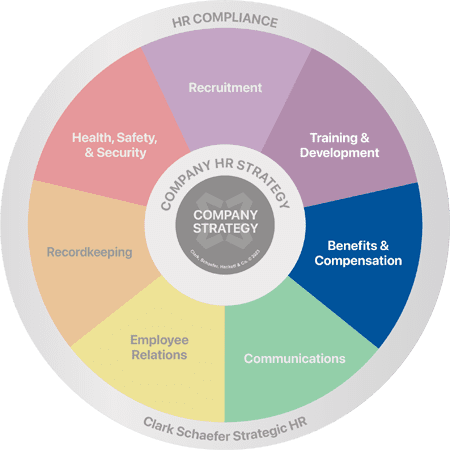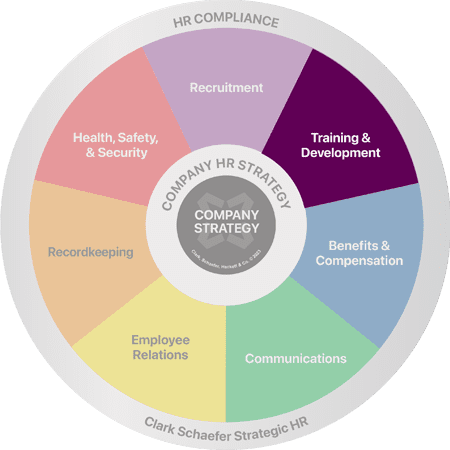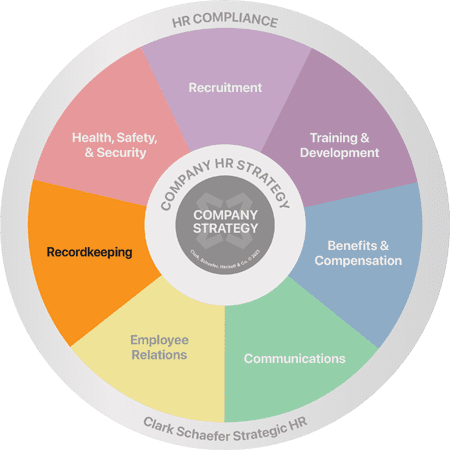What is the Value of Job Descriptions?
Last Updated on November 15, 2022 / Communications, HR Compliance
HR Question:
Do I really need job descriptions for my employees? Are they legally required? We have a small staff and everyone has to be willing to do everything. What is the value of having job descriptions?
HR Answer:
No, job descriptions are not legally required documents, however, they can help your employees (and their supervisors) to understand their responsibilities and how their roles contribute to the mission of your organization. They are also an important part of compliance and, when written well, can help to protect your organization should you face employment law disputes.
To achieve optimal performance, it’s important that your employees understand the scope of their responsibilities. Job descriptions help to define a job by determining and documenting the responsibilities of the position and the physical requirements of the job. This document is not a “how-to” or a procedure outline (which can change frequently), but rather it should capture what individuals are accountable for in their job.
Job descriptions add value because they:
- Provide a clear picture of the job to applicants applying for the position
- Help current employees to understand what they are accountable for
- Serve as a helpful tool for supervisors to coach employees on how to improve performance
- Help to determine appropriate salary levels for a position based on the expectations, education, and experience requirements for the role
- Allow individuals to evaluate the physical requirements necessary for the position and what the work environment is like (i.e., Does it require heavy lifting? Is it a “desk job”? Does it involve frequent travel, evenings, or on-call availability, etc.)
- Allow organizations to determine if an employee can perform the physical functions of a job or if an accommodation could be made for those applying for a job (or coming back from a medical leave or workers’ compensation leave, for example)
Getting Started: What to Include in a Job Description
If you’re beginning the process of creating job descriptions, it can be helpful to conduct a job analysis to understand the necessary tasks and responsibilities for the position and how the job is performed by employees at your organization.
Common components of a job description include:
- Job Title
- Reporting Structure: Role the position reports to and role(s) the position supervises, if applicable
- FLSA Classification
- Date of Job Description Creation / Revision
- Job Summary: It is helpful to provide a brief, general overview of the position.
- Essential Job Duties/Function: Describe the duties that must be performed in the job. Focus on the function of the job rather than the means used to achieve that function. It helps to identify the required outcomes of the job tasks rather than describing the tasks themselves.
- Physical Demands/Requirements
- Work Environment
- Minimum and Preferred Requirements
- Disclaimer: Explains the job description isn’t designed to list every responsibility and is subject to change.
- Acknowledgement/Signatures of Incumbent and Supervisor
For additional components to consider, see this step-by-step guide provided by the Society for Human Resource Management (SHRM). We also recommend that you consult your legal counsel for guidance to ensure your job descriptions are appropriate for your organization and legally compliant.
Out of Date Job Descriptions Pose a Risk
It is important for your job descriptions to be kept up to date, otherwise they can potentially cause more harm than good when it comes to providing HR Compliance support. However, when written well, the positive aspects of a job description outweigh the negatives and can provide you with documentation on the job requirements and support actions that you may have taken. Therefore, whenever your organization goes through significant changes or the nature of your work or specific jobs shift, be sure to revisit and revise your job descriptions accordingly.
An Easy Way to Keep Job Descriptions Updated
If finding the time to revise your team’s job descriptions feels like a daunting task in and of itself, consider addressing them one at a time. An easy way to work updates into your routine is to have supervisors take a few minutes during the performance review process to work with each employee to make any necessary updates their job descriptions. Approaching the updates one at a time during your reviews can help to make the process more manageable.
Job descriptions are too important to fall to the bottom of the “wish list.” When done correctly, they serve a multitude of functions. However, we understand busy workloads often relegate job descriptions to a “when time permits” activity. If you are putting off creating or revising your job descriptions due to a lack of time or staff, contact us. Dare we say it’s “in our job description” to help!








